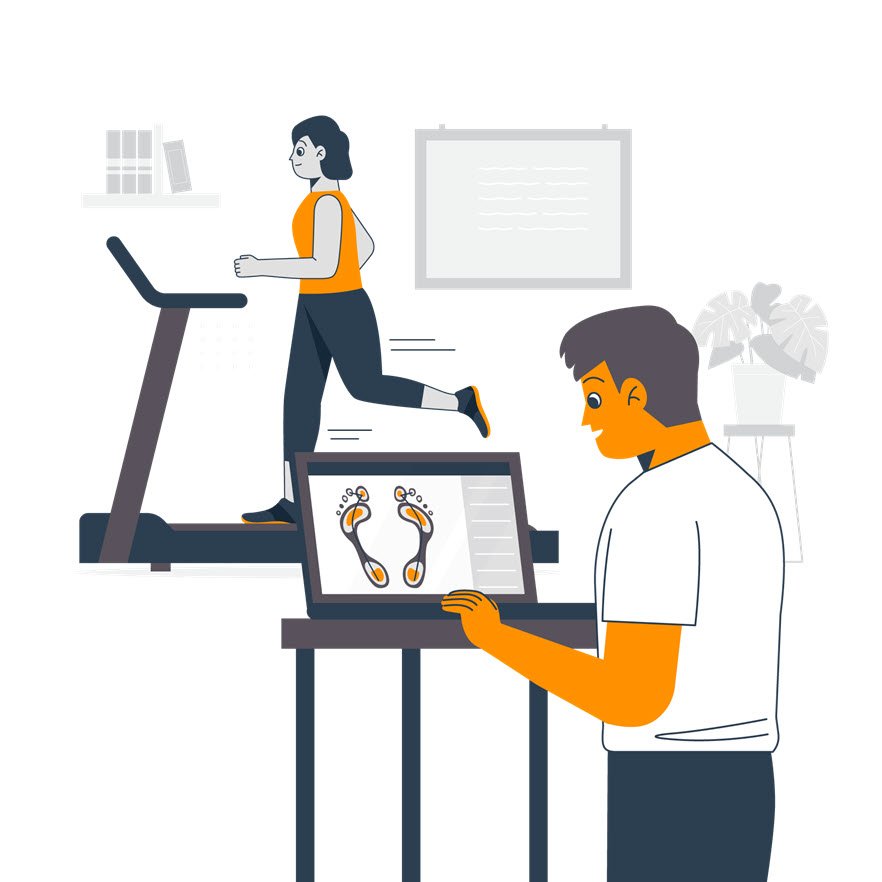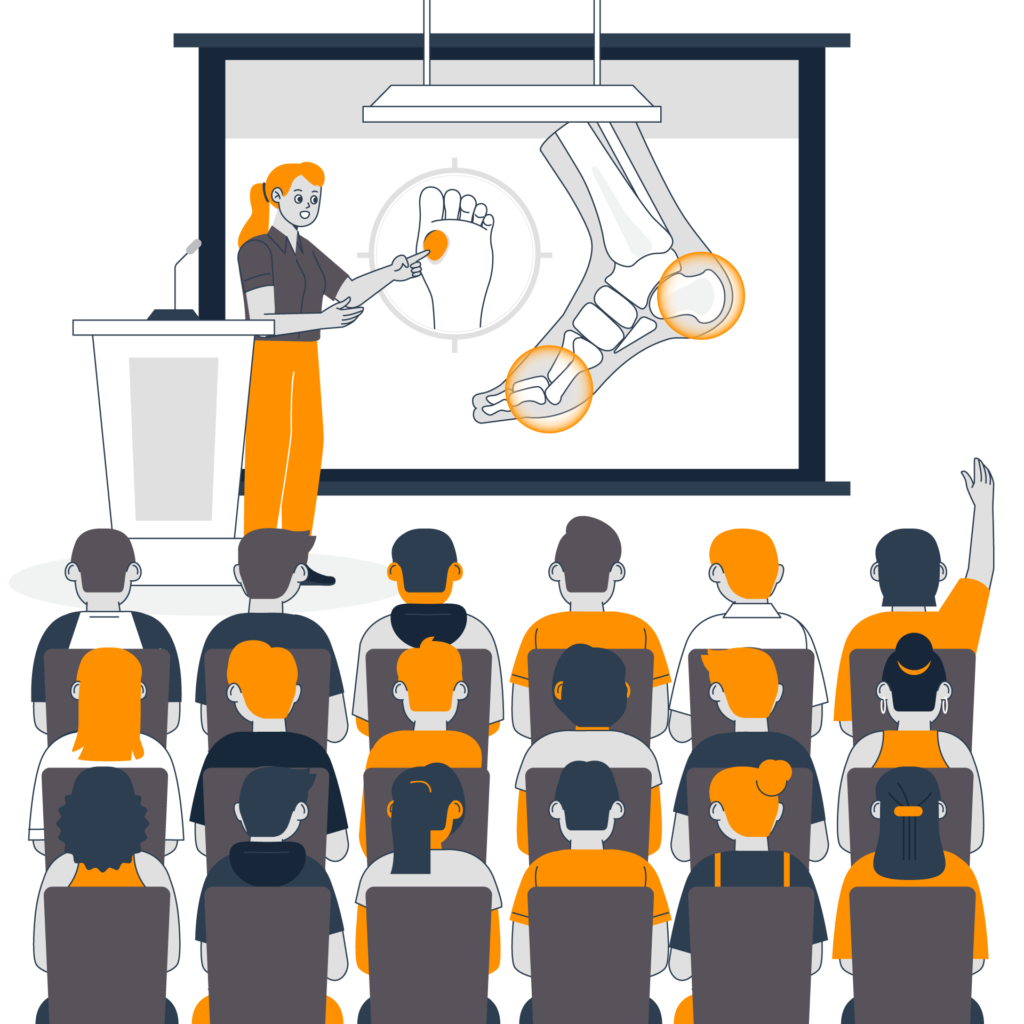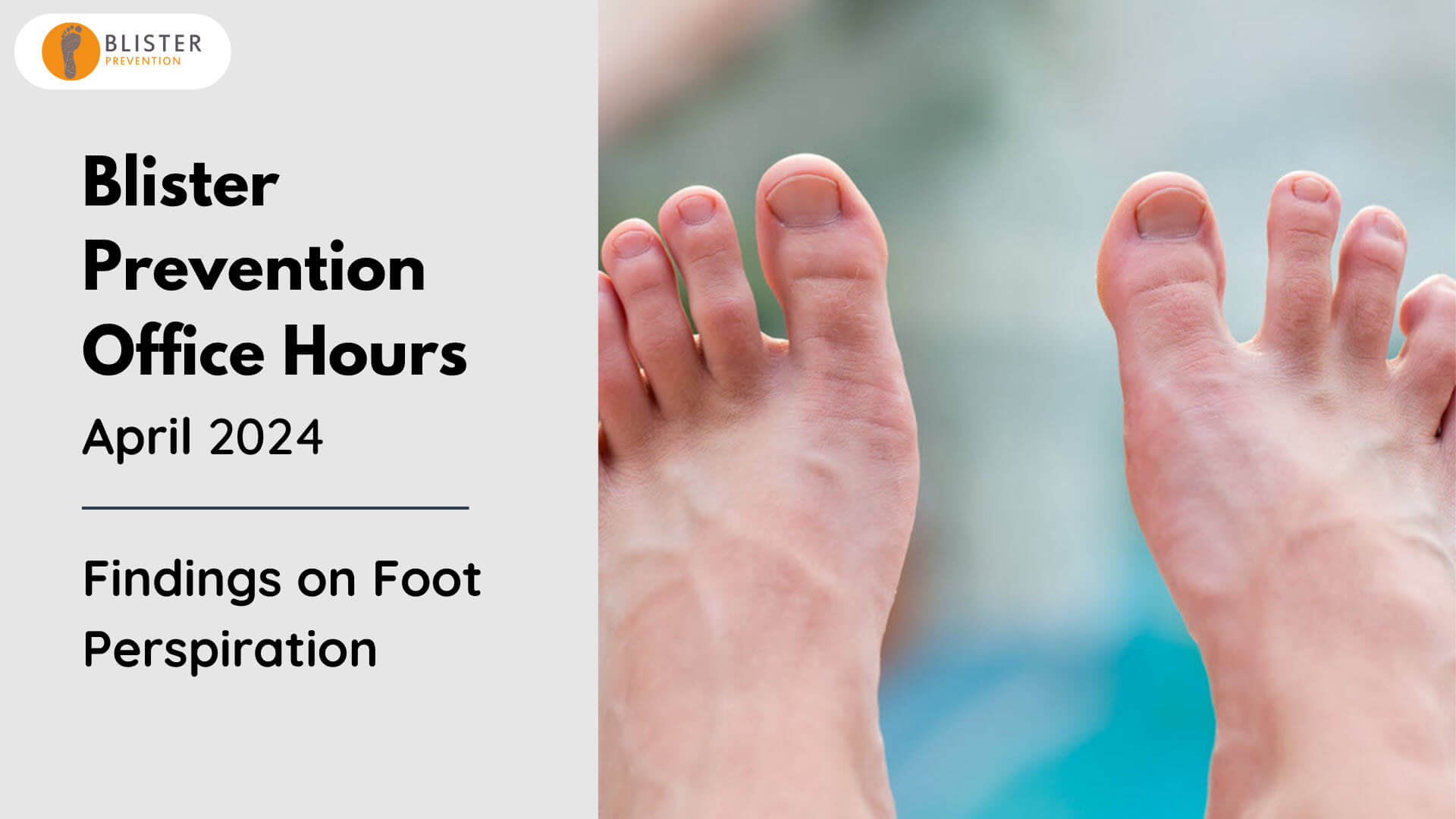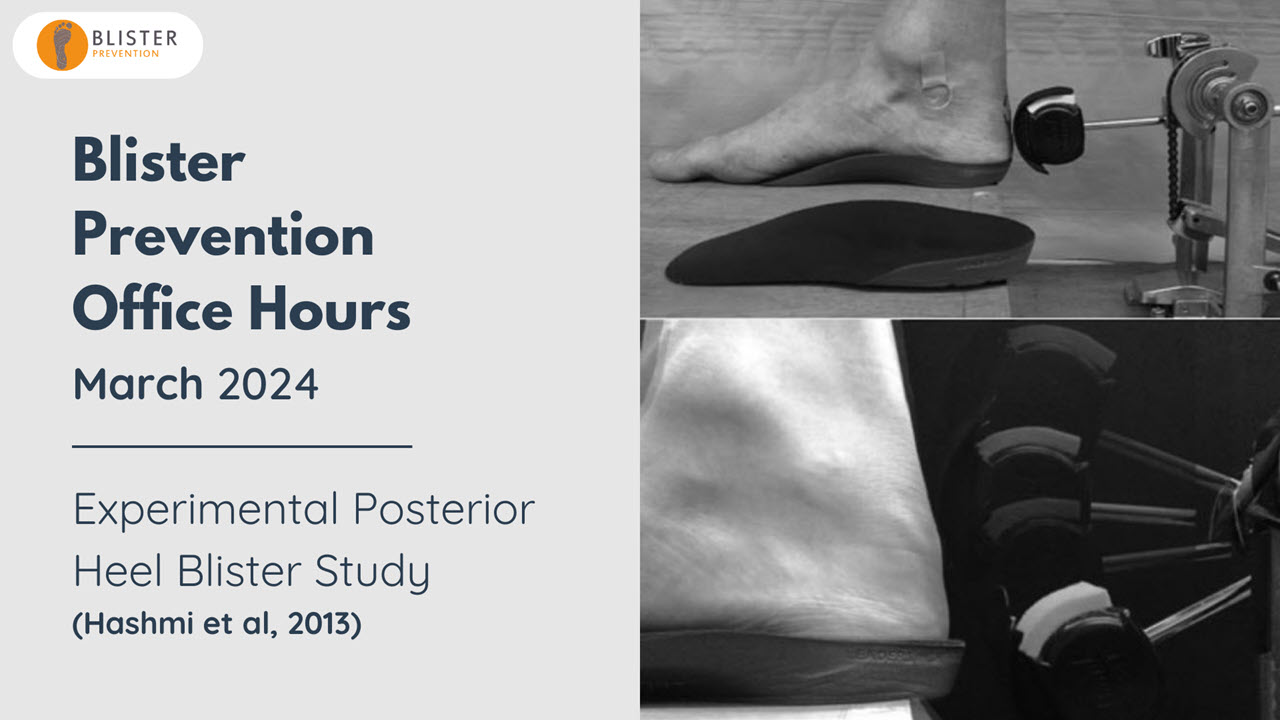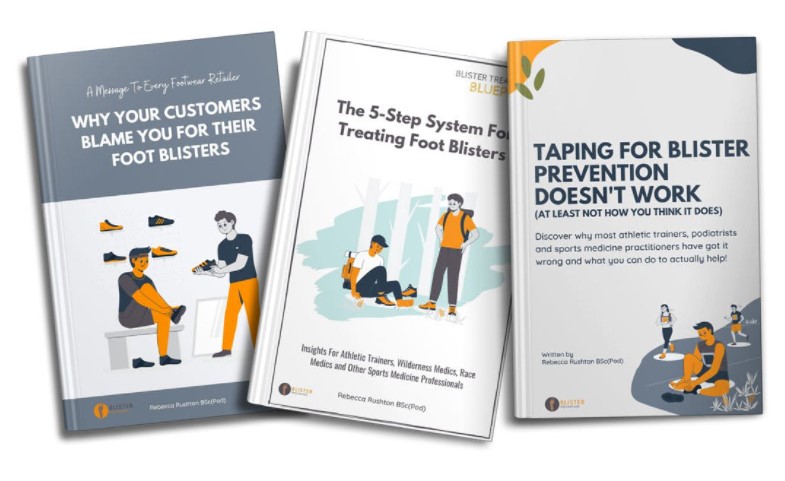Your patients think blisters are completely unpredictable. As a podiatrist, I used to, too. However, I’ve come to believe there is more that’s predictable about blisters than is unpredictable. If you ask the right questions and notice the obvious signs, you’ll help your patient implement proactive prevention to specific anatomical sites at risk of blister formation. There are 3 things to do to predict blisters.
1) Ask About Blister History
The most likely blister anyone will suffer is the blister they’ve had before. This is valuable blister intel and you’d be mad to let it pass you by. That’s why I always start their blister history. This is the low hanging fruit and a really easy way to get the blister conversation started. Your patient won’t make the connection, but you can. Determine the blisters they’ve had before and let them know they simply must have the best prevention available in place for that blister location before they even start their race or holiday or sporting carnival or whatever it is they’re about to do.
These are the blister locations they can expect to get again, and exactly where they should take immediate proactive preventive action. Not when they get a blister… now!
2) Look For Structural and Functional Predispositions
These present an increased likelihood of blister issues too and you should help your patient navigate proactive preventive action.
Callouses predict blisters
The easiest way to kick off this discussion is to consider callouses. Remember, callouses are caused by the same repetitive shear distortions that cause blisters. It’s just that with callouses, it happens to a degree where the skin has time to adapt and thicken rather than blister. All you’ve got to do is add a sudden increase in unaccustomed activity and it’s likely the balance will tip into blister territory. So ANY area that’s calloused is at risk of blistering.
How many patients do you see with callouses? A lot, right!
Pinch Callous
Pinch callouses leading to pinch blisters are a classic and an often overlooked one. These are one of the most common blisters I see in multiday running and walking events. They’re one of the most common blisters that inspire people to email me about while they’re either on holiday or hiking in countries all over the world or at the pointy end of their marathon training plan, saying they’ve always had that ridge of hard skin and never knew what it was all about, and certainly didn’t know it was a sign a blister might form when they increased their activity level. So to repeat, any area of callous is likely to blister if activity levels are about to increase.
You’re looking for things like:
- Callous
- Digital deformities like adductovarus toes, hammertoes, claw toes, both rigid or flexible
- Extensor substitution
- Bunions or a wide forefoot where there’s less than optimal shoe-fit
- Prominent joints or abnormalities in metatarsal parabola
- Haglunds deformity
- Limited ankle joint dorsiflexion
- Abductory twist
- …
Specifics Of Their Activity
Chat about their activity and determine if there are any additional factors of concern.
- Is there an endurance component eg: multiday activity? (increased need for prevention and truly effective pain relief in the presence of a blister)
- Do they have swelling issues? (increased likelihood of toe blisters)
- Will they be in a remote location? (heightened need for proactive prevention and adequate blister kit)
- Can they carry some gear on their person? (if not, there’s an increased need for proactive prevention)
- Downhill or uneven terrain? (increased likelihood of certain blisters)
- Mainly walking or running? (posterior heel blisters more likely with walking than running; forefoot blisters more likely with running)
- Climate? (wet, hot, humid increases likelihood of blisters generally / is there added risk of maceration?)
Blister Plan
From the above information, I provide my patients with a written Blister Plan. I strongly suggest you do the same, at least for the people who are about to increase their activity level in some way, like training for a marathon, taking part in a charity walking event, or going on holiday.
Your patient needs a plan for each blister location they’ve had trouble with before, and the ones you think they’re at risk of, based on their foot structure and function. A blister plan is so important in getting them on board with your recommendations. Make it easy for them. You’re about to turn everything they thought they knew about blisters on its head. They need this written down so they can refer back to it and clearly see why you’ve suggested x, y and z for their blisters.
A plan is something to follow. It’s setting them up for success when you’re not around. It’s something they can ponder and refer back to. Give them a blister plan that’s based on their history, their anatomy and their activity. There is no single perfect product or strategy for every blister on the foot, for every person, in all conditions. You can’t expect your client to know the pros and cons of every strategy – not like you do. This is why they need your help and guidance in choosing the right prevention for their blister locations. Don’t just let them walk away and forget what you said. They’ll flounder. Give them a plan.
Win-Win
You have the ability to truly help your patients predict, prevent and treat friction blisters. Look and listen for the signs. Just because they don’t have blisters now, and just because you won’t be around when they occur, does not let you off the hook. Please help them. It’s our job. So, let’s do our job. There are people out there, your own patients in fact, wishing you had answers, and wishing you would be proactive and help them with their feet. There are no downsides, it’s a win-win.
- You’ll have happier patients – I mean, who doesn’t want that?
- It makes you look good – who doesn’t want to look good by being good at their job? You’ll rarely have to even get your hands dirty and deal with blisters – it’s the proactive identification of blister issues and advice that’s most needed.
A Legitimate Pathology
Blisters are a legitimate pathology. And as podiatrists, we are legitimately the right people to be dealing with this. If not us, then who?

